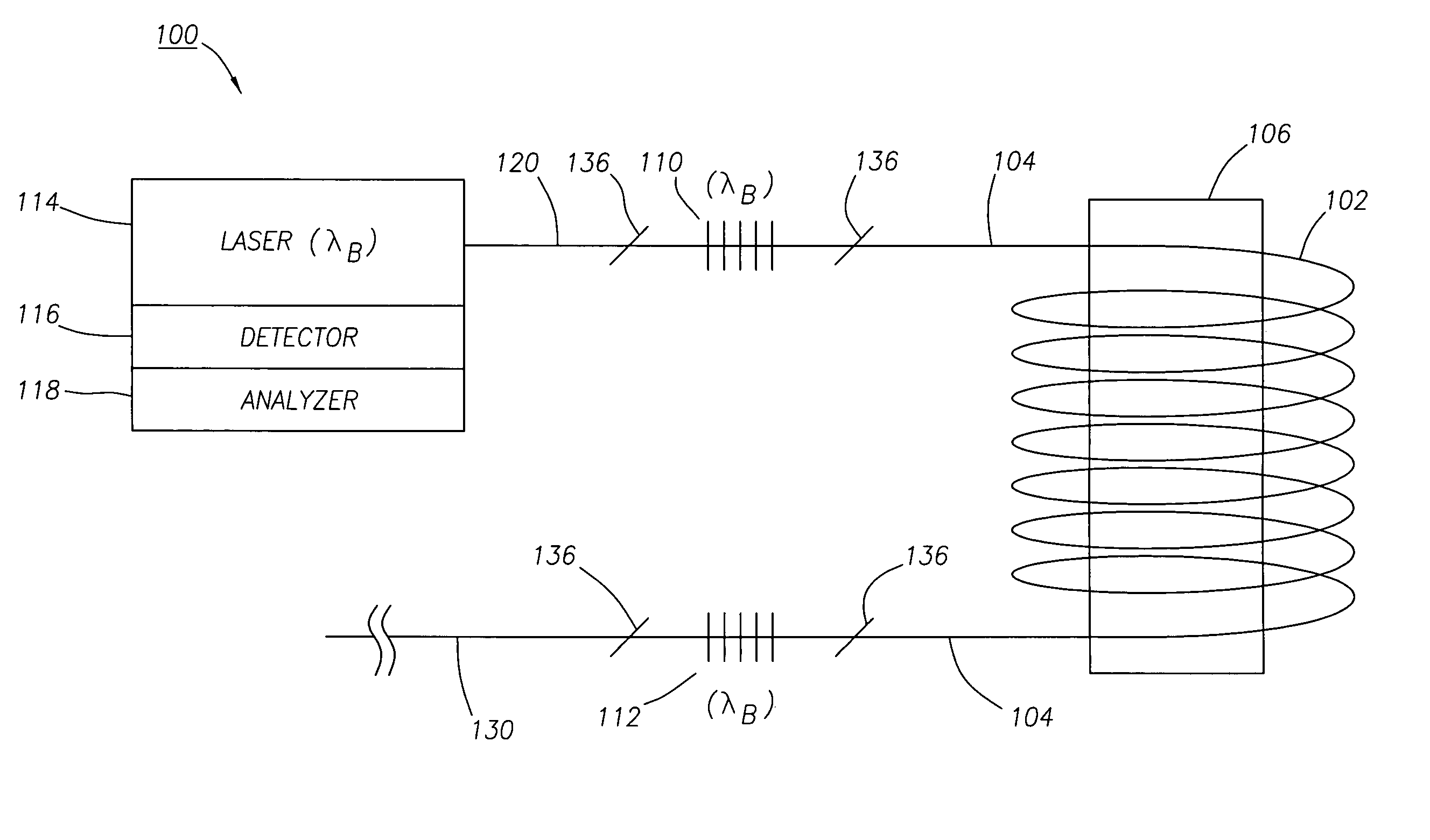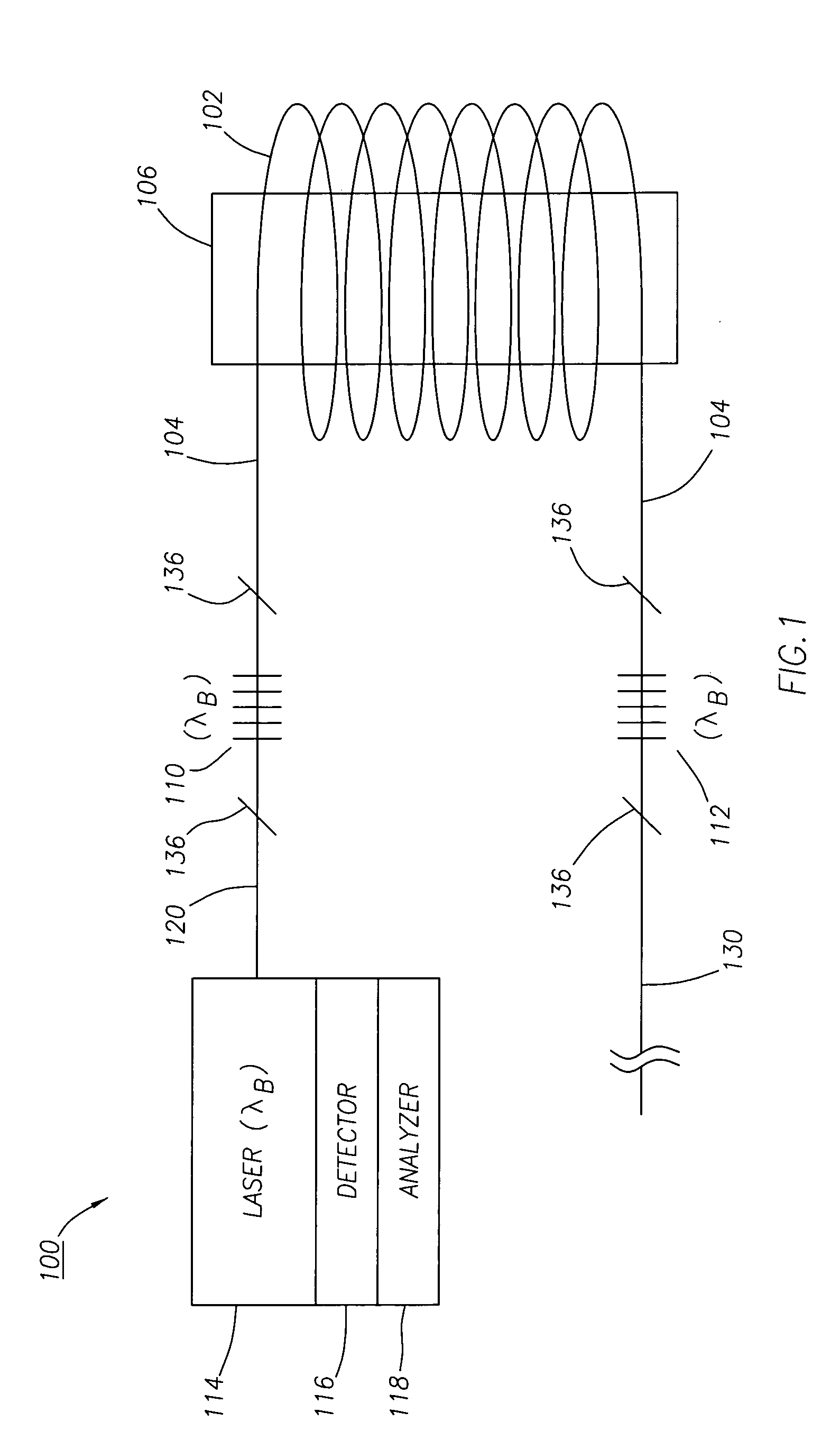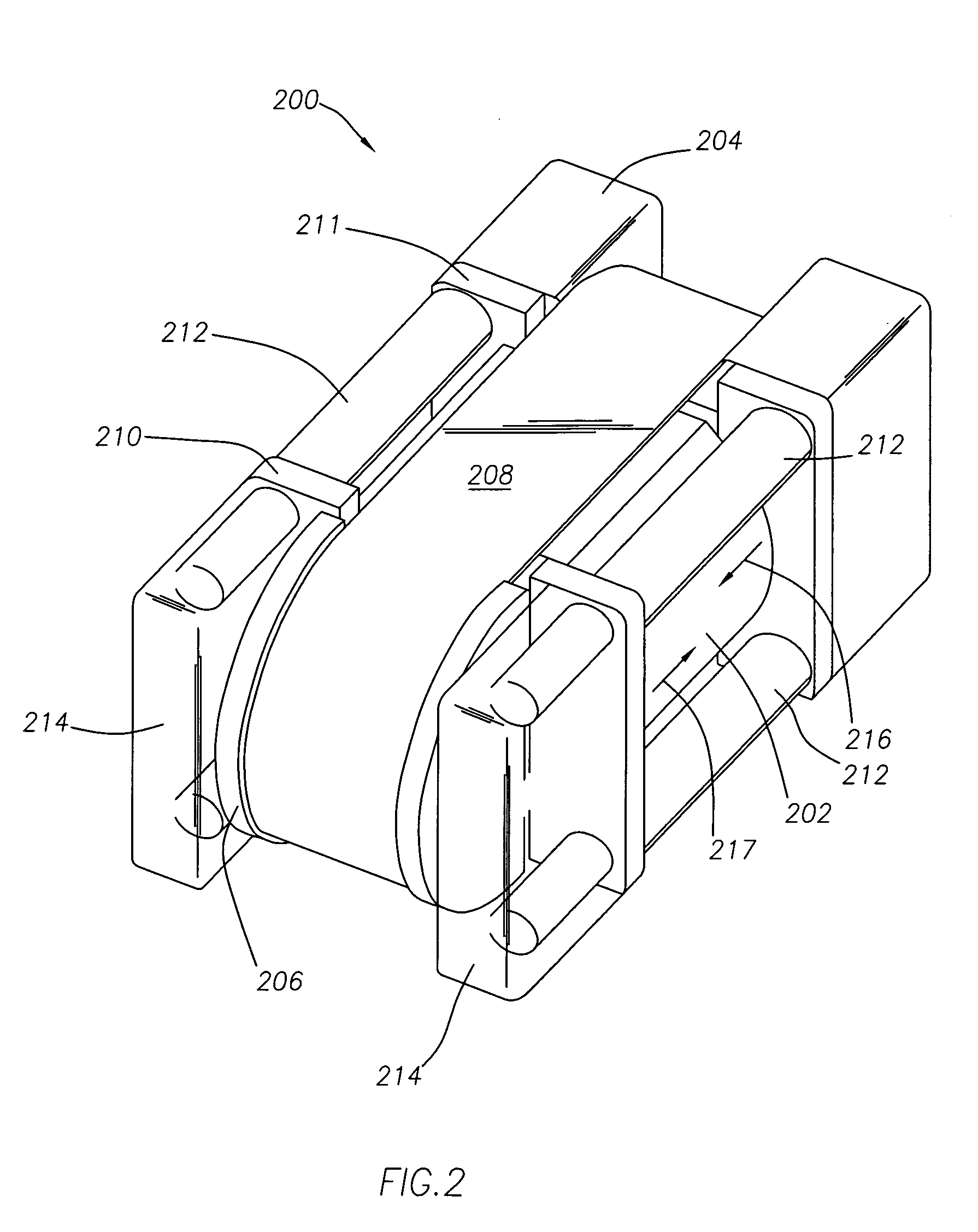Highly sensitive accelerometer
a high-sensitivity, accelerometer technology, applied in the direction of acceleration measurement using interia force, optical radiation measurement, instruments, etc., can solve the problems of difficult to provide, many prior accelerometer designs are unacceptable, and electrical accelerometers are difficult to provid
- Summary
- Abstract
- Description
- Claims
- Application Information
AI Technical Summary
Benefits of technology
Problems solved by technology
Method used
Image
Examples
Embodiment Construction
[0028] Embodiments of the invention generally relate to an optical accelerometer. The accelerometer may be coupled to any surface or structure subjected to acceleration to be sensed. In one particular application, the highly sensitive accelerometers described herein may be disposed within sensor stations spaced along a seismic cable used to obtain an ocean bottom seismic (OBS) survey. As described in greater detail herein for some embodiments, each accelerometer may include a pair of fiber optic sensors separated by a length of optical fiber, forming an interferometer. Each sensor in the pair may reflect a narrow wavelength band of light having a central wavelength. Each accelerometer may operate at a different wavelength band and central wavelength such that the signals may be easily detected using Wavelength Division Multiplexing (WDM) techniques. Alternatively, the signals may be separated in time using Time Division Multiplexing (TDM).
[0029]FIG. 1 schematically illustrates a si...
PUM
 Login to View More
Login to View More Abstract
Description
Claims
Application Information
 Login to View More
Login to View More - R&D
- Intellectual Property
- Life Sciences
- Materials
- Tech Scout
- Unparalleled Data Quality
- Higher Quality Content
- 60% Fewer Hallucinations
Browse by: Latest US Patents, China's latest patents, Technical Efficacy Thesaurus, Application Domain, Technology Topic, Popular Technical Reports.
© 2025 PatSnap. All rights reserved.Legal|Privacy policy|Modern Slavery Act Transparency Statement|Sitemap|About US| Contact US: help@patsnap.com



